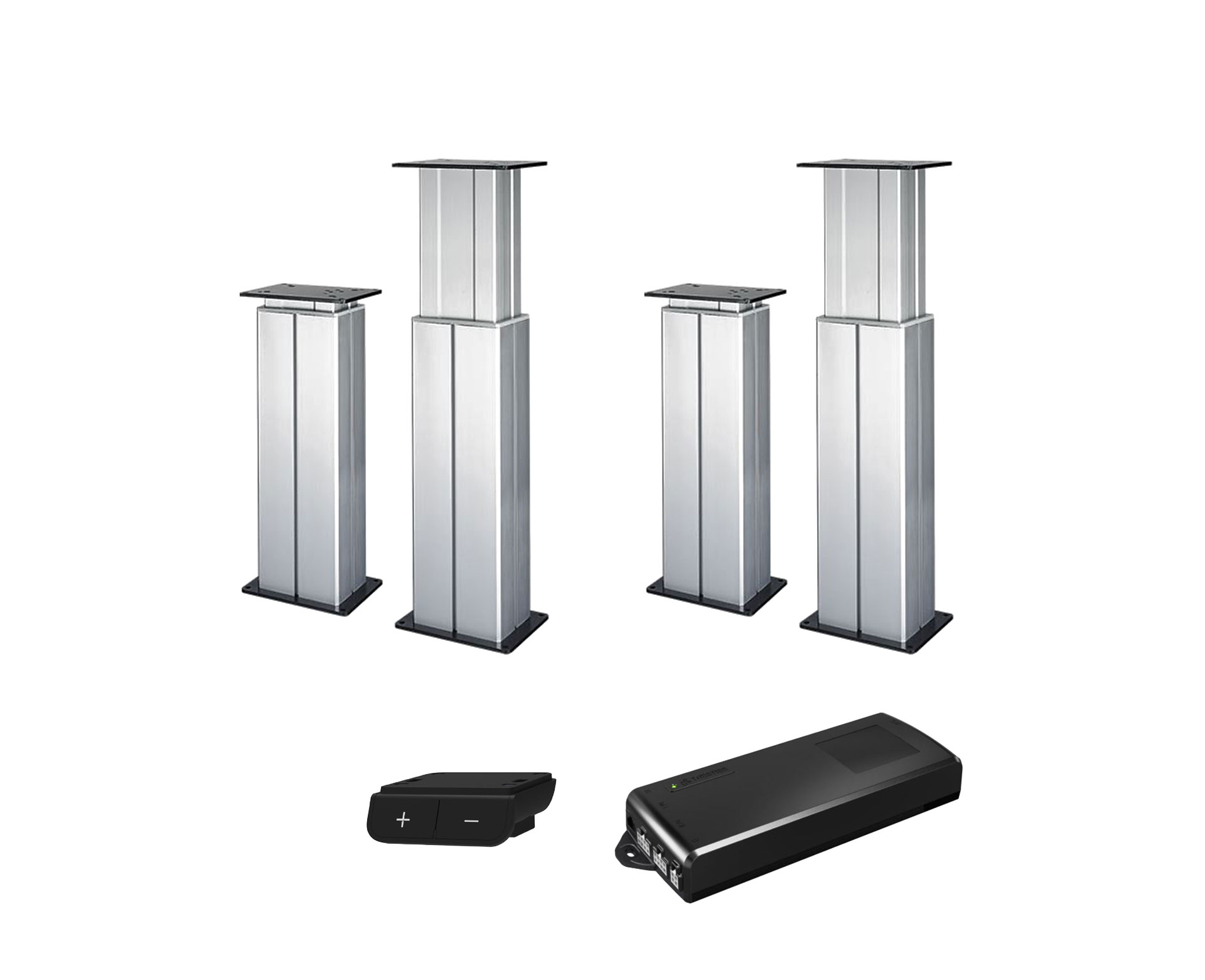
how is a lifting column constructed?
January 20, 2022
Sascha Rissel
Here we explain how a lifting column is constructed and take a closer look at its function and operation. Detailed information is provided in the following sections.
Structure of a lifting columnLifting columns
are electronic devices that can be used to lift a load to different heights without having to lift the load yourself. Most lifting columns are made of tubular steel profiles (Linak). There are two different profile tube designs, namely tubular steel or rectangular profile steel (square steel).
There are also lifting columns made from extruded aluminium profiles. The profile cross-section is available in a wide variety of shapes, for example oval, rectangular or square. Depending on the manufacturer, there are also special shapes such as corrugated aluminium profile tubes (Baumeister & Schack).
Multiple telescopic
lifting columnsTheprofile of a lifting column consists of two profiles that are pushed into each other in the case of double telescopic lifting columns. In the case of triple telescopic lifting columns, the lifting column consists of three interlocking profiles. The profiles are separated from each other by means of Teflon sliding blocks. If the lifting columns had no Teflon sliding blocks between them, the profiles would run in and would no longer be able to execute the movement of the internal spindle, as the adhesive or frictional resistance would be too high. Grooves would then form, causing chips to form. The chips then jam the gap between the lifting column profiles, causing the lifting column to become defective.
Inner workings of a
liftingcolumnThe lifting column contains a single or double spindle. On the single spindle there is a follower that moves up and down depending on the direction of spindle rotation. The double spindle is a spindle with an external pitch and a single spindle rotating in the opposite direction. The spindle is attached to an electric drive at the bottom, which moves the spindle. As soon as the double spindle is rotated by the electric drive, the double spindle telescopes and pushes the often three-part lifting column apart. With a counter-rotating double spindle, more stroke can be achieved with a smaller installation depth (e.g. Linak DL4S).
Where does the lifting column get its power from?
The internal spindle already mentioned has a pitch (thread), similar to that of a threaded rod or a screw. The steeper this pitch, the faster the lifting column runs. However, if a lifting column runs fast, it has less force. The flatter the pitch of the spindle, the slower and more powerful the lifting column is.
The following therefore applies to the force of a lifting column: fast running=little force / slow running=a lot of force
How loud is the noise development of a lifting columnThe
noise development varies depending on the lifting column and its sound insulation. However, most lifting columns operate at a noise level that does not disturb a conversation. The lifting columns we have in our LinearDirect programme are all very quiet in operation.
How long is the service life of a
lifting column?The service life of a lifting column depends mainly on the weight load and the number of strokes. If you constantly operate a lifting column at its limit, it may become defective after just a few years. It therefore makes sense to always design the lifting column with a slightly higher lifting force than required. Another important point is the external exposure to dust or vapours. If a lifting column is used in a wood workshop or sawmill, for example, it is exposed to a high level of dust. The dust settles in the gaps between the profiles and sooner or later impedes the lifting movement. The static friction becomes too high and the function is restricted until the lifting column fails. For applications with dust and vapours, we recommend fitting an additional bellows as protection around the lifting column. This significantly increases the service life.
Where can you buy a lifting column?
Many lifting columns are produced by industrial manufacturers who only sell to corporate or industrial customers. Here at LinearDirect you can order high-quality industrial products from well-known manufacturers such as Linak, Baumeister & Schack or TiMotion directly online. We sell to private and corporate customers from batch size one.




